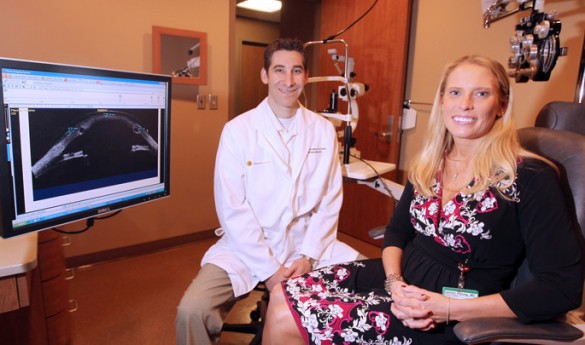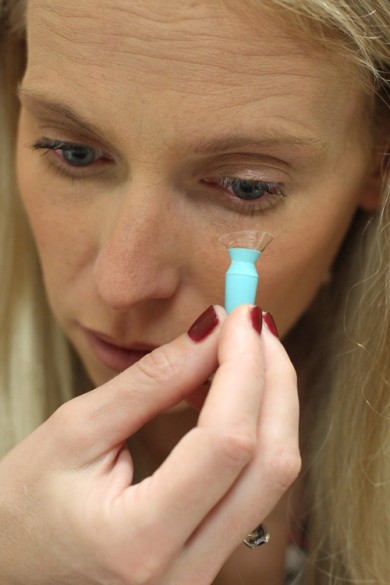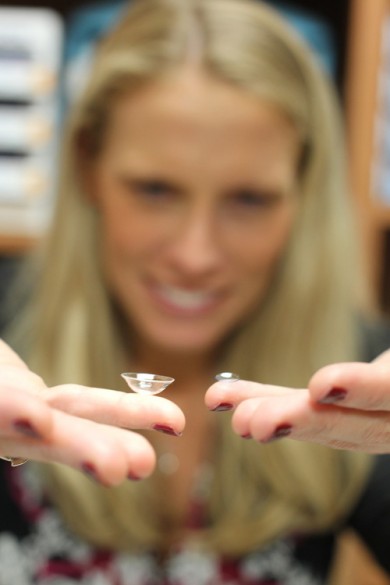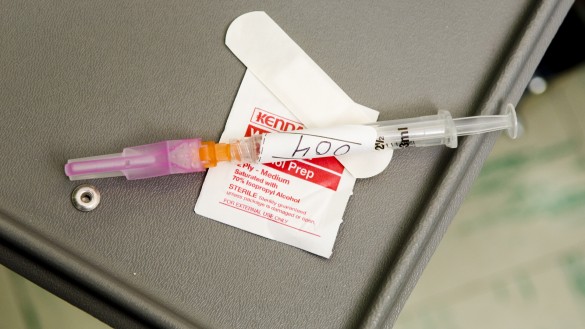
Camiron Pfennig, M.D., still fondly remembers performing her first operation.
The then 5-year-old aptly used the brightly colored, chunky plastic tools from her Fisher Price doctor’s kit to extend the life of her beloved stuffed animals and dolls.
Now 33, she has spent the last five years living out her dream as an Emergency Department physician and director of Undergraduate Medical Education at Vanderbilt University Medical Center.
But her career was in serious peril because rapidly fading eyesight was jeopardizing her vision. When Pfennig was 15 she was diagnosed with keratoconus, a thinning disorder of the cornea that causes distortion and reduced vision.
In the early stages of the disease, vision problems are often corrected with glasses or soft contact lenses. As it progresses, patients are often moved into rigid, gas-permeable lenses. Advanced keratoconus can require corneal transplantation.
The corneal abnormality can severely affect simple tasks like driving, watching TV and reading. For Pfennig, the loss of independence was making her life miserable.
“It was getting to the point where my eyes were ruining my life,” said Pfennig, who spent a lot of time in the ophthalmologist’s office. “I was trying to decide whether I should go ahead with the transplant or try something else. I was running out of options.

“I had wanted to be a doctor since I was 5,” she said, pausing. “I never changed my mind. Being a doctor was everything to me and being an ED doctor was even more important. I knew I had to be on my game at all times because we never know what is coming through that door.
“When I was faced with the possibility that I would not be able to practice emergency medicine, I fell apart.”
Pfennig experimented with various treatments, from glasses to soft and gas-permeable contact lenses to wearing both types of lenses at one time. She even agreed to a surgical procedure in hopes of slowing the progression of the disease, to no avail.
For months she alternated between her right and left eye for use in routine examinations while bowing to colleagues to perform the more sophisticated and intricate procedures.
“I remember getting corneal abrasions and ulcers regularly because the hard lenses did not fit the pointed cornea,” she said. “I would have to wear one contact at a time and I was getting headaches and experiencing significant dizziness.
“I got to the point of frustration which led to decreased performance at work and in my personal life. I couldn’t do anything if I couldn’t see.”
Pfennig was near giving up until she walked into Jeffrey Sonsino’s office at the Vanderbilt Eye Institute late in 2011.
Sonsino, O.D., assistant professor of Ophthalmology, is the director of the Scleral Lens Clinic at Vanderbilt, the only dedicated scleral lens practice in the region. Scleral lenses are custom-made, large-diameter, rigid gas-permeable lenses that typically range from 14 mm to 20 mm in diameter, twice the size of a standard rigid gas-permeable lens. The larger sized lenses rest on the white of the eye, or sclera, unlike standard lenses that rest on the cornea.
Scleral lenses form a chamber on top of the cornea filled with saline solution, constantly bathing the cornea in fluid. It acts as a liquid bandage to help treat dry or diseased corneas and masks irregularities of the cornea in an effort to improve vision.
It also protects the cornea from exposure to air and the rubbing effects of blinking. While the fluid acts like a cushion, it also provides oxygen to the cornea.
Sonsino admitted that Pfennig’s case was challenging.
“It typically takes us three to four visits until the patient is able to take the lenses home,” said Sonsino of the fitting and evaluation process. “On some patients we get it right the first few times and on others it can take months to maximize the proper acuity and fit because it is a highly specialized process.
“We don’t give up on people, and in Camiron’s case we were not quitting. She went from 20/2000 to 20/25 in both eyes, which is normal vision.
“She is an extremely high-functioning individual and for someone like that, there was no option but to push forward. Being the wingman for someone like Camiron makes me very proud to do what I do,” Sonsino said.
Just days after the final lens adjustment, Pfennig competed in an Ironman competition — another one of her lifelong goals. As most participants were worried about their bodies breaking down, Pfennig was most concerned about her eyes.
“During the entire 14 hours of the race I was thanking God for these scleral lenses,” she said. “It was one of the most incredible things I’ve ever done. I even finished the race well under my goal time.”

She credits her optical team, which also includes Dora Sztipanovitis Mathe, M.S., O.D., for giving her back her life.
“I’ve been working with Dr. Pfennig for several years trying to find a long-term solution for her keratoconus,” said Mathe. “But no matter what type of contact lens we tried, we could never achieve the comfort she needed. Running out of options, I recommended she meet with Dr. Sonsino to try scleral lenses, and after years of pain and blurry vision they were able to achieve success.”
Scleral lenses typically last one to three years. Sonsino hopes the optical therapy used to treat a wide variety of corneal abnormalities as well as severe dry eye conditions will become more widely used.
“We see five to 10 patients a week in our clinic,” said Sonsino. “I think this is the future of contact lenses for this group of patients.”














